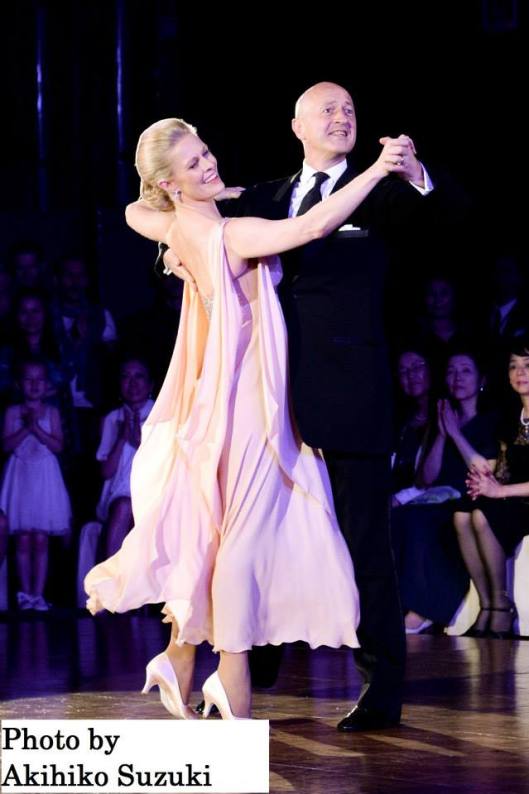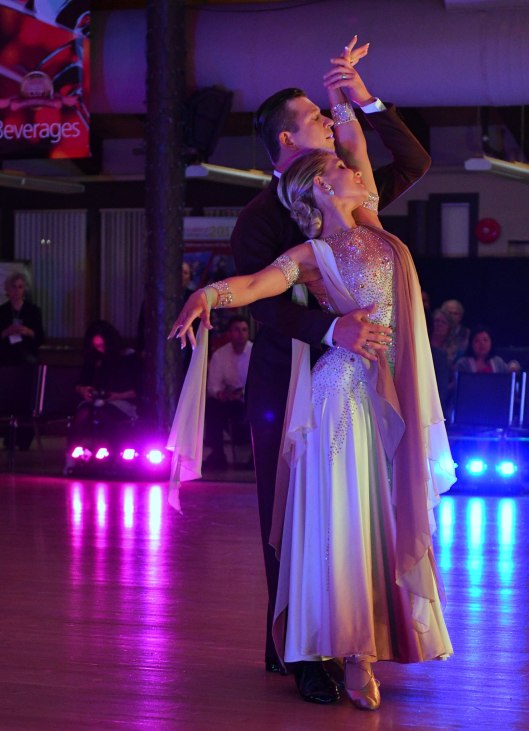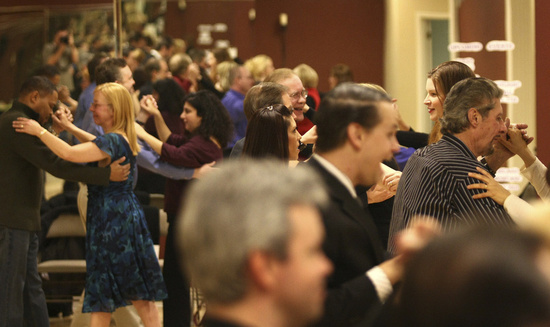
- Have you or anyone in your household had COVID-19?
- Are you experiencing fever/cough/loss of taste or smell?
- Have you been tested for COVID-19?
- If yes to any of the above, have you completed the 14 day quarantine?
23 Tuesday Jun 2020
Posted in Uncategorized

07 Friday Sep 2018
Posted in Uncategorized
We are so extremely proud of all of our students who competed at the Embassy Ballroom World Pro/Am Championships this past weekend! We could not be more excited for our DIVA Diana Dean for winning her second consecutive World Pro/ Am Smooth Title with her instructor Slava! We are also so very proud of Linda Duncan and Lynn Borgatta for becoming World Pro/ Am Finalist in their events! Go Team Briora!
14 Tuesday Aug 2018
Posted in Uncategorized
We could not go another day without saying what a great time we had at Seattle Star Ball 2018! We are so pleased to win the Top Studio Award and to be able to see all of our students’ hard work paying off. They truly danced with their hearts and made us so unbelievably proud! WOW! We are so grateful for the family we have at Briora and enjoy each moment we get to do what we love together!
27 Friday Jul 2018
Posted in Uncategorized
What an unforgettable evening we had at Briora’s first ever social outing! The weather was absolutely perfect and so was the company. We love all of our students, and being able to get to know them better outside the studio was a treat. The night was truly magical! Lake Washington never looked more beautiful than when you’re dancing the night away with friends! Enjoy the photos 🙂
08 Tuesday Aug 2017
Posted in Benefits of Dancing, Competition, Uncategorized
This past weekend featured the Pacific Northwest’s most exciting annual ballroom dance competition, the Seattle Star Ball, and Briora’s dancers represented our studio with style, class, and of course, amazing dancing!
If you are new to ballroom dancing, you might be wondering, why compete? There are many benefits – first of all, it is a fun experience! At a competition, you’re surrounded by people who share your passion for dancing, and you get to perform to great music on a great floor in a beautiful ballroom. Competitions also provide motivation to get better, and last but not least, dancing at a competition is exciting and leaves you with a feel good glow after you dance! Want to learn more? Just ask any of the dancers who participated this weekend.
Briora’s dancers of all ages and levels rocked the floor at Seattle Star Ball, and had lots of fun doing it! We even brought home a Top Studio trophy for Briora!
In the youth divisions, Briora was represented by Mikhail Miroschnichenko and Allyson Suevsky, Anton Boudzko and Keylee Milania Hoberock, Cisco Keanu Hoberock, Donae Sherman dancing with her teachers Ruslan and Umario, Ivan Sinelnikov and Olivia Sherman, and Erik Griffin and Rachel Malamud. These young dancers placed in the top of their divisions and have very exciting futures ahead of them!
In the adult Pro/Am and mixed Amateur divisions, Briora was represented by Slava Stefanov dancing with Diana Dean and Linda Duncan, Ruslan Kaliuzhyni dancing with Lynn Borgatta and Sue Ikai, and Gleb Makarov dancing with Michiko Black. These gorgeous women and their teachers represented Briora with grace and elegance, and won nearly all first places!
In the Adult Amateur divisions, Briora was represented with style and energy by Kevin O’Farrell and Yingying Chen, and Don Walker and Pamela Nygard.
On Saturday night, the pros took the floor, where the highlight of the event was the Open Professional Smooth division, described in DanceBeat (the popular ballroom dance news source) as “the largest and best division.” In this exciting event, Briora’s directors, Slava and Jessica Stefanov, took 3rd place in a performance described by DanceBeat as “very fluid” and “a level above the field.”

Jessica and Slava with Briora’s Top Studio Trophy!
Finally, as part of the festivities on Saturday evening, Briora was awarded a top studio trophy thanks to the amazing performances of all our dancers. Thanks again to all our teachers and students for representing Briora this weekend with class, grace, a fun spirit and beautiful dancing! We can’t wait to do it all again next year!
08 Wednesday Feb 2017
Posted in Meet the Stars and Steps
Tags
ballroom, Briora, Dance Interview, fun, Instructors, Meet the Stars and Steps, Step by Step, Steps
Hello from Briora Ballroom!
It’s been a while since we’ve last updated, but a special thanks to our dedicated viewers for staying along for the ride! We are excited to announce a new monthly series based on what makes our studio great; our instructors, our students, and the fun we have dancing!
Starting next month, we will be giving you an inside look at what gives our dancers their drive and passion for dance, as well as sharing some of their favorite tips and tricks!
Comment with any questions or advice you would like to hear from our instructors first hand, and we will do our best to answer them!
Stay happy and have fun dancing!
14 Monday Nov 2016
Posted in Uncategorized
The dictionary defines poise as “graceful or elegant bearing in a person.” But what does it mean in dancing? In dancing, poise refers to the “pitch of the body and placement of the body weight relative to the feet.” Having the right poise looks graceful and elegant on the dance floor, and also serves a more practical purpose, helping the dancer to maintain balance and shape through movement.
The ideal poise varies among the different partner dances, and can even change at times during the same dance, depending on the requirements of choreography. In the Latin and Rhythm dances, you will learn about the key principal of “forward poise.” Forward poise in Latin American dancing means that the weight is shifted slightly forward toward the inside of the ball of the foot. This forward posture enables both the lightning fast movement that is such an exciting feature of Latin dancing, as well as facilitating the connection between the two dance partners’ body weights.
In American Smooth and International Ballroom dancing, the term poise is usually used to refer primarily to the “stretch of the woman’s body upwards and outwards and leftwards into the man’s right arm to achieve balance and connection with his frame, as well as to project outwards to the audience.” The man also has poise upwards and slightly leftwards to counterbalance the lady’s position, but it is much less dramatic than the lady’s apparently extended stretch. Poise is very closely related to both posture and dance position, and can be constantly changing as the dance position changes. It is very important in the ballroom dances that dancers understand how poise and position are properly created, rather than simply copying the look of advanced dancers. If posture, poise and position are not properly understood, it can result in distortion of balance, restricted movement, and injury to the back.
There are a few simple ways to understand poise in your ballroom dances. Want to learn more? Our Briora instructors can help you learn the appropriate poise in all your dances, so you can achieve a graceful and elegant look on the dance floor! Be sure to attend your favorite group class this month, or ask you instructor for tips at your next lesson.
Our next blog post, will focus on the 3rd “P” – position. Stay tuned!

Perfect poise, demonstrated by beloved Briora guest coach and World Champion, Charlotte Jorgensen
08 Tuesday Nov 2016
Posted in Uncategorized
Introducing the Technique of the Month!
Briora is excited to introduce a new tool to help you improve your dancing – the technique of the month. Each month, our teachers will emphasize a particular area of dance technique in our group classes, so each class you take reinforces your learning of key principles in ballroom dancing!
In November, we will be learning about the “3 P’s” – posture, poise, and position. Please continue reading below about the first and most important “P” – Posture.
Posture
There is one secret that all great dancers know; namely, the importance of posture. It is only when you achieve your ideal posture that you will be able to reach your full individual potential in dancing.
Good posture is not merely aesthetic, it allows the dancer control of balance and freedom of movement in all the joints. And yes, it also looks great and portrays an aura of confidence on the dance floor and in life! Improving posture also has an array of health benefits. It reduces back and neck pain, helps you breathe easier, and helps you maintain a healthy weight (you burn an extra 350 calories a day just by standing up straight!). It has even been shown to improve your mood and productivity, as well as memory and brain function!
The human spine has a natural “S” shaped curve. Perfect posture is created not by flattening these natural curves, but by elongating the spine to the maximum degree while maintaining its natural curves. The majority of people spend a great deal of time sitting, which can result in a slight “slump” (excessive curvature) in the upper spine. In addition, gravity is constantly exerting its force on us, so posture tends to worsen with age. You may also find that your posture is slightly different every day, as it is dependent on seemingly small factors such as how you slept the night before, and what your physical activities were during the previous day. For this reason, even professional dancers must constantly work on their posture in order to maintain optimum alignment of the spine. (Ever seen Slava hugging the wall or walking around with a broomstick tied to his back? Rest assured, he is not crazy, he is just working on his posture!)
The good news is that with a little knowledge and effort, you can experience both the health and dance benefits of great posture! Our Briora instructors have a few tricks up their sleeves to help you achieve your optimum posture. Be sure to attend your favorite group class this month, or ask you instructor for tips at your next lesson.
Stay tuned for our next blog post on the second “P” – Poise – which is sure to lend you a “graceful and elegant bearing” on the dance floor!
A special thanks to Briora guest coaches Ray Rivers and Charlotte Jorgensen for inspiring this post by teaching us to always strive for better posture!

The ideal alignment of the spine lengthens its natural curves.

Good posture allows freedom of movement and self-expression, every dancer’s ultimate goal!
01 Saturday Aug 2015
Posted in Uncategorized
Tags
ballroom, ballroom dance bellevue, ballroom dance classes, ballroom dance competition, ballroom dance lessons, ballroom dance redmond, ballroom dance studio, ballroom dancing, ballroom dancing competition, ballroom studio bellevue, ballroom studio redmond, Briora Ballroom, cha cha, dance, dancers, eastside, exercise, fitness, foxtrot, fun, health, jive, latin, quickstep, rumba, samba, seattle, social dance, standard, swing, tango, waltz

Unquestionably, ballroom dancers of all levels experience a love-hate relationship with their dance shoes. While the right pair can make you feel like you can fly, the wrong pair can send you crashing back to reality. Especially susceptible to the new shoes blues, dancers can spend copious amounts of time searching for the perfect fit. Blood, sweat and tears are shed trying to break the molds of ill-fitting dance shoes to our calloused feet.
Whether you’re wearing them to a private lesson, ballroom workshop, dance practice, ballroom competition or an all night social dance party, your shoes should feel as good as your home slippers. If they don’t, you’ve yet to find your perfect fit. But the seemingly elusive perfect fit does exist and fortunately, Briora’s dance instructors are more than willing to help you find it!
With the increasing number of quality brands and vendors available (International, Supadance, Ray Rose, AIDA, DSI, Capezio, Star and many more), it’s easy to get overwhelmed. Everyone has his or her own preference, because everyone’s feet are different! Here are some of my tips—gathered from wearing down hundreds of shoes over my 16 years of dancing—to aid in your journey.
Sizing

Each brand of dance shoes has slightly different sizing specifications. It’s especially important to pay attention to sizing charts and conversions when ordering ballroom shoes online and from different countries. European and U.K. sizing is different from U.S. sizing, and more often than not, the size of your dance shoes will not match the size of your regular shoes. That’s perfectly normal!
A great rule of thumb for ladies is to order Standard or Smooth dance shoes in at least a half-size larger and Latin dance shoes in at least a half-size smaller. Whenever you are dealing with close-toed shoes, you must take care to leave room for your toes, especially since Standard and Smooth dance shoes taper off to a point. When it comes to open-toed shoes, it often helps to have your toes spill over the edge of the dance shoe, giving you more freedom to grip the floor as you tackle your Cha-Cha or Rumba walks.
For gentlemen, the task is easier. Because men’s shoes are not as stiff as ladies shoes, they are inherently more flexible, and more likely to mold to your foot shape. No need to deviate from your standard shoe size to feel comfortable doing a perfect Foxtrot feather step.
Heel Size

Another great rule of thumb for ladies (unless there is a big height gap between you and your partner) addresses heel size. For Standard and Smooth shoes, I suggest getting a lower heel (2 inches is my ideal), and for Latin shoes a higher one (3 inches works for me).
A lower heel for Standard and Smooth styles facilitates natural swing action, whereas a higher heel may restrict you from being able to soften into your ankles with ease. You want your weight to move freely from your toes to your heels, and higher heels tend to focus your weight on your toes.
In Latin, the higher heel is actually a benefit, helping you place your weight over the balls of your feet, allowing for more nimble, speedy footwork. Not to mention, it’s much easier to point your toes! As always, ask your dance instructor for advice before picking a heel height—they know what your dancing needs and what shoe will work with you instead of against you.
The aforementioned rule also applies to gentlemen—a very low heel is preferred for Standard and Smooth styles, whereas a higher heel is appropriate for Latin. Next time you browse through dance shoes, pay attention to the heel shape—it tends to be square for Standard and Smooth shoes, but more triangular for Latin.
Straps for Ladies

When it comes to Standard shoes, I’ve always preferred having a strap holding my shoe together, as opposed to a plastic band or no strap at all. For me, the strap provides a sense of security, and helps me distribute my weight equally over the entirety of my foot. Plus, I never have to worry about my shoes falling off during my dance lessons or, even worse, at ballroom competitions.
In the case of Latin dance shoes, I’ve always preferred T-straps to ankle straps. Not only do my feet feel more secure with the T-strap protecting against wobbly ankles, but I have more power to direct weight distribution over my foot. If you move the vertical strap towards the inside of your foot, for example, your weight will follow. Ankle straps, while less stable, allow your foot to be more flexible, often resulting in a more beautiful pointed foot. Take the time to experiment with both and ask your dance teacher which style best suits your feet.
Where to Look

If you’re a competitive ballroom dancer, competitions are great opportunities to try on and experiment with many different brands and styles of shoes from attending vendors. If you don’t frequent competitions, you can order shoes online, directly from each vendor. Often times, you can find lightly worn or brand new shoes on Ebay from more high-end brands (like International or Ray Rose) at drastically reduced rates.
You can also visit local dance shops, like Star Dance Shop in Lynwood, which carries many brands and also puts in special orders. Briora has a great stock of Smooth, Ballroom, Latin and practice shoes for both men and women, so you can try a pair on and test them on our floor during your dance lesson. Just visit our dance shop, which carries Capezio and Star brands, or ask our receptionist for help. While we carry several sizes, we can also put in a special order if your size is unavailable.
Practice vs. Competition

Once you’ve found the perfect pair of dance shoes, make sure to buy two pairs. Dedicate one pair for your practice and one pair for dance competitions or special occasions, like weddings or parties. You know how they fit, so there will be no surprises. If you’re a competitive dancer, practice and take dance lessons in your competition shoes the week leading up to the event to break them in. After the first time, dedicate them only to competitions—dirty shoes distract the judges from your dancing (and are often a pet peeve!).
As is always the case, practice makes perfect when looking for dance shoes. So, if your first pair is especially incompatible with your feet, don’t despair. Follow these tips, talk to your instructors, and keep trying!
16 Saturday May 2015
Posted in Benefits of Dancing, Competition, New Ballroom Dance Studio
Tags
ballroom, ballroom dance bellevue, ballroom dance classes, ballroom dance competition, ballroom dance lessons, ballroom dance redmond, ballroom dance studio, ballroom dancing, ballroom dancing competition, ballroom studio bellevue, ballroom studio redmond, Briora Ballroom, cha cha, dance, dancers, eastside, exercise, fitness, foxtrot, fun, health, jive, latin, quickstep, rumba, samba, seattle, social dance, standard, swing, tango, waltz

Many of us spend our whole lives trying to “find ourselves.” We go on a grand search to chip away at some elusive barrier that is magically preventing us from understanding our identity and life’s purpose. We travel the world, we pick up new hobbies, we hunger, and we try to lose ourselves to find ourselves. But this search doesn’t always have to manifest itself in outward action—even if we’re not struggling to find ourselves, our friends and family are, and we are infected with that lingering state of mind.
Unfortunately, many of us take this state of mind with us on the dance floor. I know I do. And it doesn’t matter if we’re competitive or social dancers, whether we turn to dance for expression or exercise. So many of us come to a standstill when we try to “find” the dancer we should be. We search for certain feelings, actions and sensations—waiting for them to come to us and feeling utterly hopeless when they fall outside of our mental and physical grasp.
But instead of trying to “find yourself,” focus your whole life on creating yourself. Use dance as a tool to build yourself up, to explore self-realization and growth. When it comes to the dance floor, be ambitious about the dancer you’d like to become and stop scapegoating the required effort onto mysterious externalities.
Instead of relying on your teacher, dance partner, or coach to shape you into a good dancer, realize that your mind is the key to achieving that goal. At any level, consider the following:
Become Aware of Your Motivations for Pursuing Dance

Allow yourself to self-reflect, to understand why you are drawn to dance. Often, these motivations reveal much about all of our endeavors, and can in turn help us understand what type of dancers (and people) we want to become.
Do you love ballroom because you enjoy socializing and dancing with others? Are you trying to conquer the samba in order to lose a couple of inches off your waist? To improve your health? Are you passionate about performing in front of others? Be conscious, always.
Set Weekly Goals

Once you understand your motivations, construct and set attainable, weekly goals for yourself. By the end of this week I want to feel confident dancing my silver tango routine. Or at the Friday party I want to dance with at least 4 different partners. Or, even more simply: I want to do the best natural turn at the end of my next private lesson.
By deliberately identifying areas for improvement, and pacing yourself to select goals that are reasonable but not overwhelming, you set yourself up for success. Conquering one small goal a week positively reinforces your commitment and state of mind.
Make sure to share these goals with your teachers, so that they can help you succeed. Still, exercise self-reliance and don’t become passive, depending on your teachers to conquer those goals for you. We rely on our teachers to tell us what we’re good at without identifying those strengths ourselves or understanding what we’d like to excel at. Seek their advice, wisdom, and experience but remember that your body and mind have to do the work.
Self-Attribute Both Success and Failure

In our everyday lives, many of us choose to attribute successes to our hard work, our ambition, our perseverance. When it comes to failures, on the other hand, we sometimes choose to shrug off personal responsibility, ascribing unsuccessful endeavors to forces beyond our control. The rest of us, those who are self-critical, do the opposite.
Bringing either of these attitudes with you to the dance floor is toxic. In dance, you must train your mind to understand that both your successes and failures should be self-attributed.
When dancing with a partner, frustration comes easy, and blame is often thrown on the actions of the other person. Of course I couldn’t get through the entire quickstep, you were pushing me the whole time! Or, on the other side of the spectrum, we think ‘of course that Cha-Cha was great, my teacher knows what they’re doing.’
In both these scenarios, you are passing off your responsibility to the hands of others, allowing them to dictate your success. Instead, focus your introspection on what you did to contribute to the success of a figure, routine, or performance. Likewise, consider how you may have contributed to a failure—in ballroom, there can never be only one person at fault.
Make Room for Inspiration

Watch dancers that are better than you. Maybe it’s a social dancer who makes leading look effortless or a competitive dancer who has perfect rumba walks. Rather than letting their excellence overwhelm you, allow room for inspiration to blossom.
Identify what you like about their dancing or attitude, and consider whether those factors align with your own motivations and goals. Don’t expect to “find yourself” in their dancing, but rather talk to your teachers or partner about what steps you can take to reach that level of excellence for yourself.